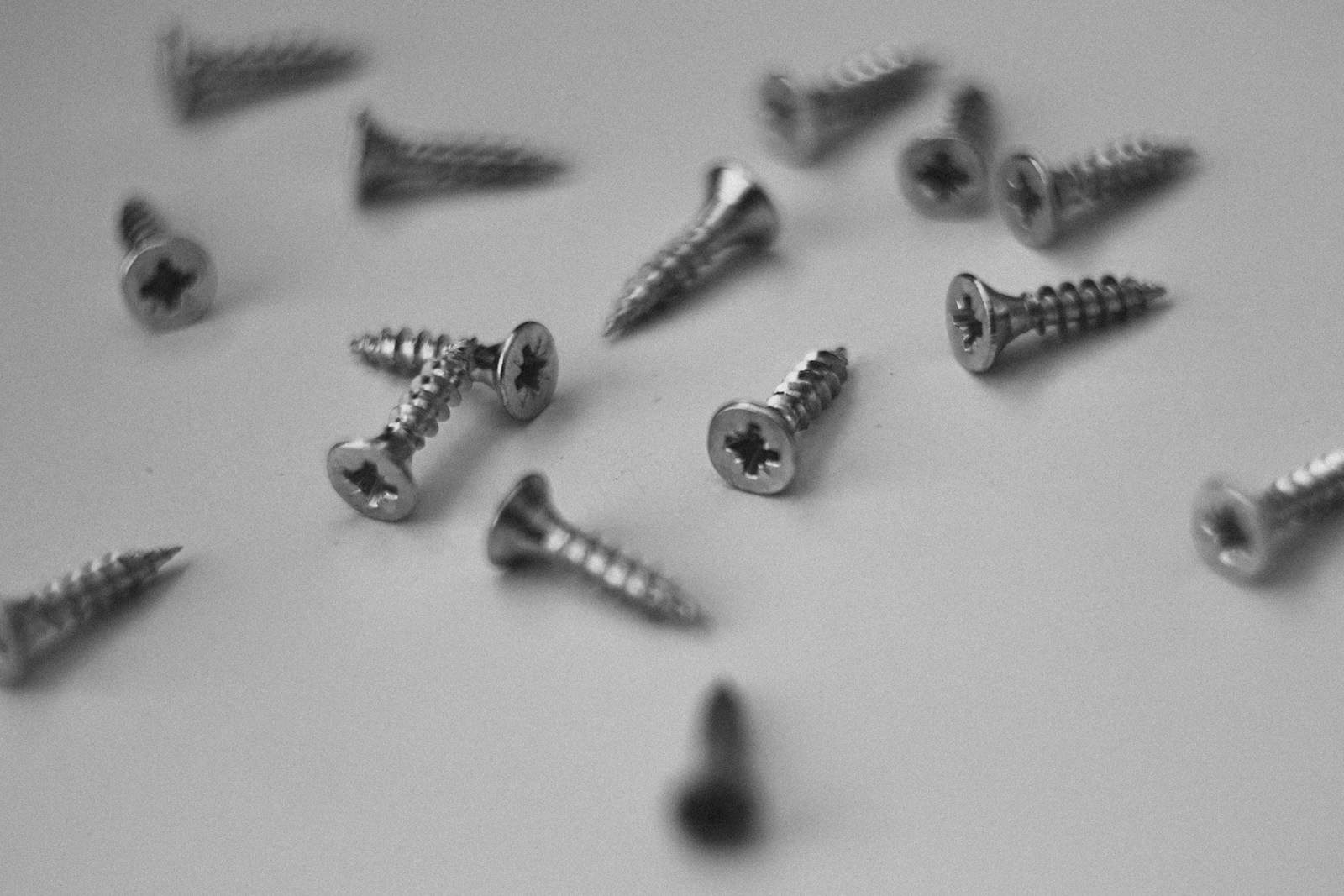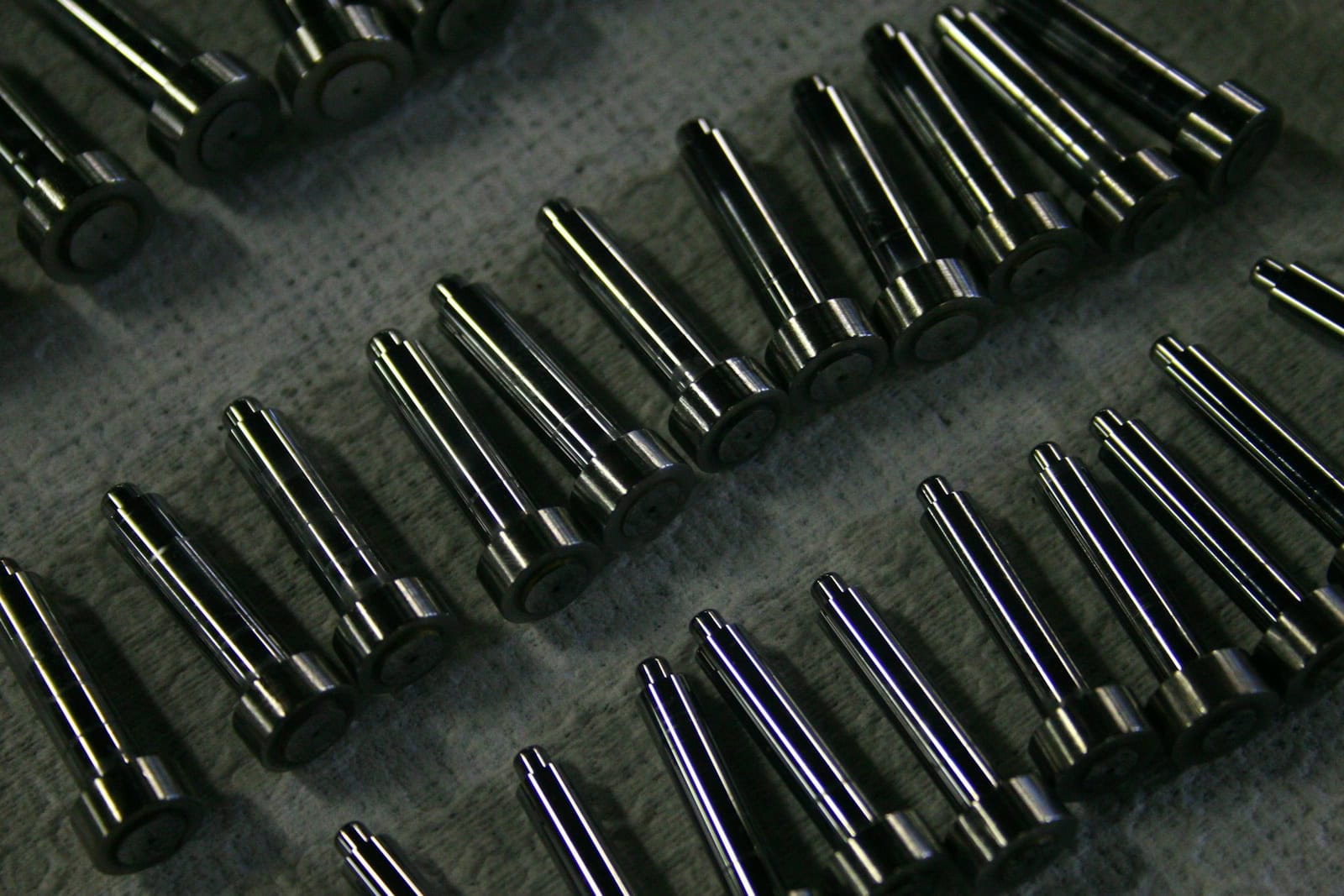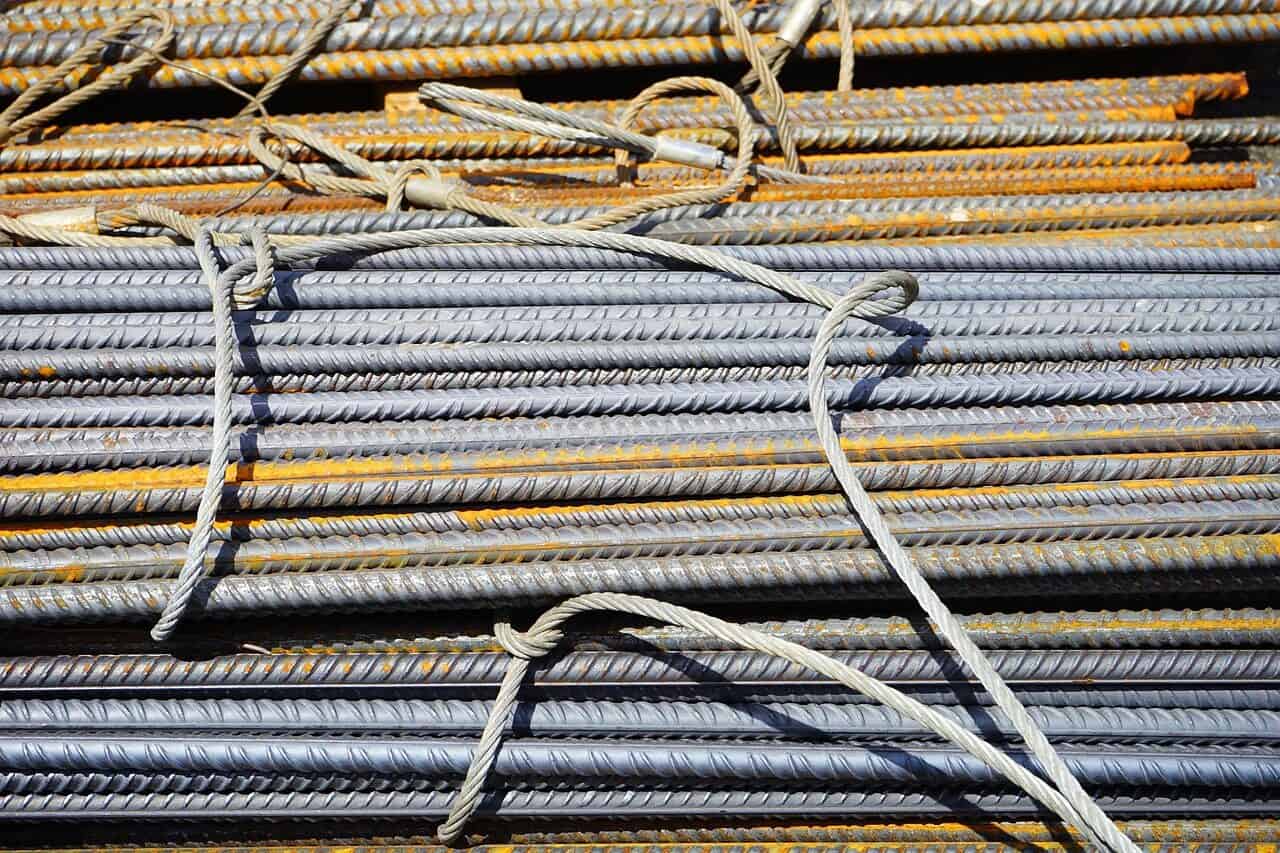The Complete Guide to Alloy Steel Screws: How to Choose, Use, and Care for Them
Introduction
In building and engineering, even the smallest parts can cause big problems if they fail. A single screw that’s chosen wrong or installed poorly can make the difference between a structure that lasts and one that falls apart. This guide focuses on one of the most important types of fasteners: alloy steel screws. Unlike regular acier au carbone, alloy steel screws are specially made materials that have specific elements added to make them perform better under extreme stress. They aren’t just “stronger” screws – they’re solutions to tough engineering problems.
This article is designed to be the complete, practical guide for anyone working with these important parts. We will avoid confusing technical language and give you clear, useful advice. By the end, you will feel confident choosing, installing, and maintaining alloy steel screws correctly, making sure your projects are safe, reliable, and long-lasting.
You will learn:
- The basic properties of alloy steel and why it’s important.
- How to understand complex grades and specifications like a pro.
- A step-by-step method for choosing the perfect screw for any job.
- Professional best practices for installation and tightening.
- Proper storage and maintenance to make fasteners last longer and keep projects safe.
What Are Alloy Steel Screws?
To make good decisions, we must first understand the basics. Learning what alloy steel is, and more importantly, what makes it better for demanding jobs, is the first step toward using it correctly. This section explains the main concepts and terms that form the foundation of the entire selection and use process.
What “Alloy Steel” Means
At its core, all steel is a mixture of iron and carbon. However, when we talk about “alloy steel” for fasteners, we mean steels that have other elements purposely added to change their properties. Think of it like a cooking recipe: regular steel is the basic dough, but alloy steel has specific ingredients like chromium, molybdenum, nickel, or vanadium added in exact amounts. Each element gives unique characteristics, changing the final material. For example, chromium makes it harder and more resistant to rust, while molybdenum increases strength at high temperatures. This careful chemical engineering is what gives alloy steel screws their advanced abilities.
Key Benefits
The decision to use an alloy steel screw instead of a regular carbon steel one is driven by the need for better performance. The main advantages are clear and significant, directly affecting the safety and durability of an assembly.
- Superior Strength: This is the most recognized benefit. Alloy steels go through a heat treatment process called quenching and tempering, which rearranges their internal structure to dramatically increase both tensile strength (resistance to being pulled apart) and yield strength (resistance to permanent bending). High-quality alloy steel grades can show tensile strengths well over 150,000 PSI, far exceeding the ability of common low-carbon steel fasteners.
- Enhanced Toughness: Strength without toughness is brittleness. Toughness is a material’s ability to absorb energy and bend without breaking, which is critical for applications involving shock or impact loads. Alloying elements, combined with proper traitement thermique, give these screws the ability to withstand sudden forces that would snap a more brittle fastener.
- Improved Wear Resistance: In applications with moving parts or high-friction contact, wear resistance is extremely important. The hardness given by elements like chromium and carbon, locked in by traitement thermique, allows alloy steel screws to maintain their integrity and dimensions over millions of cycles, preventing joint loosening and early failure.
- Better Temperature Performance: Regular steel can become brittle at low temperatures or lose strength (a phenomenon known as creep) at high temperatures. Alloying elements like molybdenum and chromium specifically fight these effects. This makes certain alloy steel grades, such as ASTM A193 B7, the default choice for high-temperature, high-pressure environments like boilers, engines, and chemical reactors.
Understanding Grades and Specifications
The world of alloy steel screws is governed by a complex system of grades, standards, and markings. This can be intimidating, but understanding this language is essential for making sure you are using the correct, certified part. These markings are a guarantee of the fastener’s chemical makeup, processus de fabrication, and mechanical properties.
Understanding Grading Systems
The most direct way to identify an alloy steel screw’s ability is by the markings on its head. These markings are not decorative; they are a universal code. For inch-based (SAE) bolts, the system uses radial lines.
- SAE Grade 5: Identified by 3 radial lines on the head. This is a medium-strength quenched and tempered carbon-boron steel.
- SAE Grade 8: Identified by 6 radial lines on the head. This is a high-strength quenched and tempered alloy steel, offering a significant step up in tensile strength and performance.
For metric screws, a numerical property class system is used, typically stamped on the head.
- Class 8.8: A medium-strength screw, functionally similar to SAE Grade 5.
- Class 10.9: A high-strength screw, often considered the metric equivalent to SAE Grade 8.
- Class 12.9: A very high-strength screw, typically used in the most demanding applications like automotive engine internals and high-performance machinery. The “12” indicates the nominal ultimate tensile strength (1200 MPa), and the “.9” indicates that the yield strength is 90% of the ultimate tensile strength.
Common Alloy Steel Grades
While countless grades exist, a few dominate industrial and commercial applications. The following table provides a comparative overview of the most common grades and classes you will encounter. Understanding their key differences is essential for proper selection.
| Année d'études / Classe | Nominal Tensile Strength (PSI / MPa) | Common Alloying Elements | Key Characteristics & Common Applications |
| SAE Grade 5 | 120,000 PSI | Carbon, Manganese, Boron | Medium strength, good toughness. Automotive frames, general machinery, structural steel connections. |
| SAE Grade 8 | 150,000 PSI | Carbon, Manganese, Alloy Quench & Temper | High strength, good wear resistance. Heavy equipment, engine components, critical suspension joints. |
| ASTM A193 B7 | 125,000 PSI (up to 2.5″ dia) | Chromium, Molybdenum | High-temperature, high-pressure service. Flanges in pipelines, pressure vessels, valves. |
| ASTM A574 | 180,000 PSI | High-alloy steel, Quench & Temper | Highest strength for common socket head cap screws. Used in tooling, dies, injection molds, and high-stress machinery. |
| Metric Class 10.9 | 1040 MPa (~150,800 PSI) | Alloy Quench & Temper | Equivalent to SAE Grade 8. High-tensile automotive and structural applications worldwide. |
| Metric Class 12.9 | 1220 MPa (~177,000 PSI) | Alloy Quench & Temper | Highest standard metric strength. Used for safety-critical components, performance engines, and machine tools. |
The Role of Coatings
The alloy steel itself provides the strength, but it is generally not rust-resistant. A coating, or finish, is applied to protect the screw from its environment. The choice of coating is as critical as the choice of grade.
- Plain Finish (Black Oxide): This is a minimal conversion coating that offers very mild rust resistance and is primarily for indoor, dry applications. It is often slightly oily to prevent rust during shipping and storage.
- Zinc Plating (Electro-Galvanized): A thin layer of zinc is applied via electrolysis. It provides good, cost-effective rust resistance for damp or moderately corrosive environments. It comes in clear (bluish), yellow, or black chromate finishes, which add slightly more protection.
- Hot-Dip Galvanizing (HDG): The screw is dipped in molten zinc, creating a much thicker, more durable, and more protective layer. This is suitable for outdoor and harsh environments. Note: The thick coating requires oversized nuts with tapped threads to accommodate it.
- Phosphate & Oil: A conversion coating that provides moderate rust resistance and an excellent surface for paint adhesion. The oil film enhances protection. It is common in automotive applications.
- Cadmium Plating: Historically popular in aerospace for its excellent rust resistance and lubricity, its use is now highly restricted due to its toxicity.

The Practical Buying Guide
Selecting the right alloy steel screw is a systematic process, not a guess. It involves a clear-headed analysis of your application’s demands matched against the known properties of available fasteners. Following this three-step process will prevent both over-engineering (wasting money) and under-engineering (risking failure).
Step 1: Analyze Demands
Before looking at any catalog, you must answer four critical questions about your application. Be specific and realistic.
- What are the load requirements?
- Type of Load: Is the screw primarily in tension (pulling), shear (slicing), or a combination?
- Magnitude of Load: What is the calculated or estimated force the joint must withstand?
- Nature of Load: Is the load static (constant) or dynamic (vibrating, fluctuating)? Dynamic loads introduce the risk of fatigue failure and require higher-strength materials and proper preloading.
- What are the environmental conditions?
- Exposure: Will the fastener be indoors, outdoors, or submerged? Will it be exposed to constant moisture, salt spray, or condensation?
- Chemicals: Will it come into contact with oils, fuels, cleaning agents, acids, or other corrosive chemicals?
- Temperature: What is the operating temperature range? Will it see extreme heat or very cold temperatures?
- What are the mating materials?
- The materials being joined are critical. Fastening a soft material like aluminum requires different considerations (like using a flange head or washer to distribute load) than fastening two steel plates.
- Also consider galvanic corrosion. When two different metals are in contact in the presence of an electrolyte (like moisture), one can corrode preferentially. A galvanic series chart can help guide compatible material and coating choices.
- Are there regulatory requirements?
- Does the project fall under a specific code or standard (e.g., building codes, ASME for pressure vessels, DOT for vehicles)? These regulations will often dictate the minimum grade and specification of fasteners required, removing any guesswork.
Step 2: Use the Decision Matrix
Once you have answered the questions in Step 1, this matrix serves as a powerful tool to guide your selection. Find your primary demand factor in the left column and follow the row to the right to see the recommended starting point.
| Primary Factor | Low Demand | Medium Demand | High Demand / Critical |
| Load (Strength) | Standard Carbon Steel (for reference) | Grade 5 / Class 8.8 | Grade 8 / Class 10.9 or 12.9 |
| Vibration / Dynamic Load | Use lock washer/threadlocker | Grade 5 with prevailing torque nut | Grade 8 / 10.9 with high-quality locking hardware |
| Température | Ambient temps only | ASTM A193 B7 (for high temps) | Specialist Nickel Alloys (e.g., Inconel) |
| Corrosion | Dry, indoor use (Plain/Black Oxide) | Outdoor/Damp (Zinc or Phosphate) | Chemical/Marine (Hot-Dip Galvanized, or consider Acier inoxydable) |
How to use the matrix: Imagine you are fastening a critical suspension component on a piece of heavy equipment. The load is high and dynamic (vibration). The environment is outdoors with exposure to mud and water.
- Load (Strength): High demand -> Grade 8 / Class 10.9.
- Vibration: High demand -> Grade 8 with quality locking hardware.
- Corrosion: Outdoor/Damp -> Zinc or Phosphate coating.
Your selection is therefore a SAE Grade 8 screw with a robust zinc or phosphate coating, used in conjunction with a certified locking nut or washer.
Step 3: Finalize the Details
With the grade and coating determined, the final step is to select the physical features that best suit the installation and function.
- Head Style: The most common are Hex (for external wrenches/sockets) and Socket Head Cap (for internal hex keys/Allen wrenches). Socket heads are ideal for tight spaces where a wrench cannot fit.
- Drive Type: For smaller screws, this could be Phillips, but for high-strength applications, internal drives like Torx or hex socket are superior as they allow for higher torque application without “camming out” and stripping the drive.
- Thread Pitch: Coarse threads (UNC) are more common, install faster, and are more tolerant of slight thread damage. Fine threads (UNF) offer slightly higher tensile strength due to a larger stress area and are more resistant to loosening from vibration.
Proper Use and Installation
Selecting the perfect alloy steel screw is only half the battle. A Grade 8 screw improperly installed will perform worse than a Grade 5 screw installed correctly. The installation process, specifically the application of torque, is what unlocks the fastener’s engineered potential.
The Importance of Torque
Torque is not simply a measure of “tightness.” Torque is the rotational force applied to the screw head. The goal of applying torque is to stretch the screw slightly. This elongation, though invisible, is what creates the clamping force, or preload, that holds a joint together. An insufficient preload means the joint can shift, allowing the screw to be subjected to shear and fatigue, leading to loosening and failure. An excessive preload can stretch the screw beyond its elastic limit (yield point), permanently damaging it or causing it to break during installation. Proper torque is therefore essential for achieving the designed clamping force without compromising the fastener’s integrity.
A Guide to Correct Torquing
Achieving the correct preload is a matter of process and precision. A common mistake we see is using an impact wrench or “feel” to tighten critical fasteners. This is a recipe for failure. Follow these steps for professional results.
- Clean and Inspect Threads: Before installation, ensure both the male (screw) and female (nut or tapped hole) threads are clean, dry, and free of dirt, debris, or damage. Damaged threads will give a false torque reading and prevent proper clamping.
- Apply Lubrication (When Specified): Torque specifications are highly dependent on friction. A lubricated thread has much lower friction than a dry one. For this reason, published torque charts will specify whether the value is for “dry” or “lubricated” threads. Using a lubricant can reduce the torque required to achieve the same clamping force by 25-40%. As a reference, sources like the Machinery’s Handbook provide detailed tables for different lubrication factors. Never apply lubricant unless the torque specification calls for it, and always use the specified type.
- Use a Calibrated Torque Wrench: This is the only tool that can accurately measure the applied rotational force. “Click” type, beam, or digital torque wrenches are all acceptable, but they must be properly calibrated and used within their specified range.
- Follow the Correct Tightening Pattern: For a joint with multiple screws (like a cylinder head or flange), tightening them in the correct sequence is critical to ensure even clamping pressure. A star or criss-cross pattern is standard. Tightening bolts in a circle can warp the component and lead to leaks or failure.
- Torque in Stages: Bring the joint to its final torque value in multiple steps. A common practice is to first tighten all screws to 50% of the final value, then to 75%, and finally to 100%, following the correct pattern at each stage. This ensures the joint seats evenly.
Common Installation Mistakes
Avoiding these common errors is just as important as following the correct procedure.
- Over-torquing: This is the most common mistake. It can stretch the screw past its yield point, causing permanent damage, or strip the threads in the nut or tapped hole.
- Under-torquing: A dangerously loose joint will fail from vibration and fatigue. The screw acts as a spring to hold the joint rigid; without enough stretch, it cannot do its job.
- Re-using Torque-to-Yield (TTY) Bolts: Some applications, particularly in modern engines, use TTY bolts. These are designed to be intentionally stretched into their plastic (permanent) deformation range for maximum clamping force. They are strictly one-time-use and must be replaced every time they are removed.
- Using Impact Wrenches for Final Torque: Impact wrenches are excellent for speedy disassembly and initial assembly, but they are notoriously inaccurate for applying a precise final torque. The final tightening must always be done with a calibrated torque wrench.

Storage and Maintenance
The lifecycle of an alloy steel screw begins long before it is installed. Proper storage and periodic in-service maintenance are crucial for ensuring that the fastener’s specified properties are not compromised over time. This protects your investment and, more importantly, the integrity of your projects.
Best Practices for Storage
Alloy steel, even with a protective coating, is susceptible to environmental degradation. The goal of storage is to maintain the fasteners in as-new condition.
- Environment: The ideal storage location is a dry, climate-controlled area. Humidity is the primary enemy, as it can start rust even on coated screws, especially if the coating has minor nicks or scratches.
- Organization: Store screws in their original, clearly labeled containers or in well-marked bins. Mixing different grades, sizes, or coating types is a critical error that can lead to the wrong fastener being used in an application. A Grade 5 screw mistakenly used in a Grade 8 application is a hidden failure waiting to happen.
- Protection: If storage in a humid environment is unavoidable, use sealed containers with desiccant packs to absorb ambient moisture. Keep fasteners away from corrosive chemicals, grinding dust, or welding areas.
Go-To Maintenance Checklist
For both stored fasteners and those already in service, a simple maintenance routine can prevent major problems. This checklist provides a framework for long-term care.
| Area | Action | Raison d'être | Frequency |
| Storage | Store in original, labeled containers in a dry, climate-controlled area. | Prevents mixing grades and protects from rust. | Always |
| Storage | Use desiccant packs in bins if in a humid environment. | Absorbs moisture to prevent surface corrosion. | As needed |
| In-Service Inspection | Visually inspect for signs of corrosion (red rust) or physical damage. | Early detection of potential failure points. | During routine equipment maintenance |
| In-Service Inspection | Periodically re-check torque on critical, high-vibration joints. | Ensures clamping force is maintained over time. | Per manufacturer’s or engineering specs |
When to Retire a Screw
Knowing when a screw is no longer fit for service is a critical safety judgment. Never re-use a fastener that shows any of the following signs:
- Visible Corrosion: Surface rust on a plain finish screw may be acceptable, but any sign of pitting (small craters in the surface) or significant red rust on a coated screw indicates the substrate is compromised.
- Deformed Threads: Any threads that are flattened, stripped, or galled (a form of wear caused by adhesion between sliding surfaces) will not allow for proper torque and engagement.
- Stretching or “Necking”: If you can see a visible reduction in the screw’s diameter, particularly below the head or in the thread-free shank area, it has been stretched past its yield point and must be discarded.
- Damaged Head: A rounded-off hex head or stripped internal drive makes it impossible to apply the correct torque and may make future removal impossible.
- Known History: If a screw has been subjected to a significant overload event, extreme heat (like from a fire), or if it is a TTY bolt, it should be retired regardless of its visual appearance.

Conclusion: Key Takeaways
Mastering the use of alloy steel screws is a hallmark of quality craftsmanship and sound engineering. It moves beyond simply joining parts and into the realm of creating secure, reliable, and durable assemblies designed to withstand specific forces and environments. The journey from understanding the material to executing a perfect installation is one of precision and knowledge. By learning the concepts in this guide, you can ensure your work stands the test of time and stress.
Remember these critical takeaways to guide your success:
- Selection is a process. Always analyze the load, environment, and regulatory requirements before choosing a screw. Use a systematic approach, not a guess.
- Grades and coatings matter. Match the screw’s grade to the application’s strength demand and the coating to the environmental challenge. Markings are a guarantee of performance.
- Installation is everything. The correct clamping force, achieved through precise torque, is what makes a joint safe and reliable. Use the right tools and the right techniques, every time.
- ASTM International – Standards for Materials & Testing https://www.astm.org/
- SAE International – Aerospace & Automotive Standards https://www.sae.org/
- ASME - Société américaine des ingénieurs en mécanique https://www.asme.org/
- Institut des fixations industrielles (IFI) https://www.indfast.org/
- NIST - Institut national des normes et de la technologie https://www.nist.gov/
- ISO - Organisation internationale de normalisation https://www.iso.org/
- ANSI - American National Standards Institute (Institut national américain de normalisation) https://www.ansi.org/
- ASM International – The Materials Information Society https://www.asminternational.org/
- Engineering Toolbox – Technical Resources https://www.engineeringtoolbox.com/
- Science et ingénierie des matériaux - ScienceDirect https://www.sciencedirect.com/topics/materials-science





